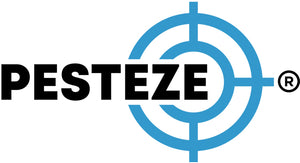HOW TO STOP BIRDS FROM NESTING UNDER BRIDGES

HOW TO STOP BIRDS FROM NESTING UNDER BRIDGES
SUMMARY
Bird nesting under bridges can lead to structural damage, safety hazards, and costly maintenance for municipalities and contractors. Proactive bird control methods prevent corrosion, protect public infrastructure, and ensure safer environments for both workers and communities.
FEATURES
-
Infrastructure Protection: Prevent droppings from corroding steel and concrete.
-
Public Safety: Reduce risks from slippery walkways and falling debris.
-
Cost Control: Minimize expensive cleaning and repair projects.
-
Compliance: Meet city sanitation and health regulations.
-
Durability: Withstand harsh outdoor weather conditions.
-
Humane Deterrence: Repel birds without harming them.
-
Versatile Application: Effective on bridges, overpasses, and transport hubs.
-
Long-Term Solution: Provides ongoing protection with minimal maintenance.
GUIDE DESCRIPTION
Bridges and overpasses often attract pest birds such as pigeons, starlings, and swallows. These structures provide sheltered ledges and beams that make ideal nesting and roosting sites. While their presence may seem harmless, nesting birds can create serious problems over time.
One of the most immediate concerns is infrastructure damage. Bird droppings are acidic and can corrode steel, concrete, and paint, compromising the structural integrity of bridges. Nesting materials can also clog drainage systems and increase fire risks when near electrical wiring. Over time, this damage becomes costly to repair and disrupts transportation networks.
Public safety is another critical issue. Accumulated droppings make walkways slippery and hazardous for pedestrians, while nests and debris can fall onto vehicles passing underneath. In addition, birds carry pathogens that may spread through droppings, posing health risks in heavily trafficked areas.
Effective bird control under bridges begins with deterrents designed to make roosting sites unappealing. Products such as bird spikes, bird netting, and tension wires physically block nesting spots along beams and ledges. For larger spans, sound or visual deterrents may also be used to discourage flocks from congregating. All methods should prioritize humane, eco-friendly practices that deter birds without causing harm.
Implementing a bird management plan early saves cities and contractors significant costs over time. Regular inspections, maintenance of deterrent systems, and professional pest management support ensure that bridges remain bird-free.
By investing in proactive prevention rather than reactive cleanups, communities can protect public safety, extend the lifespan of infrastructure, and reduce long-term expenses. A bridge free of nesting birds is not just cleaner—it’s safer, stronger, and more reliable for everyone who uses it.
- Smrithi Art


Comments 0